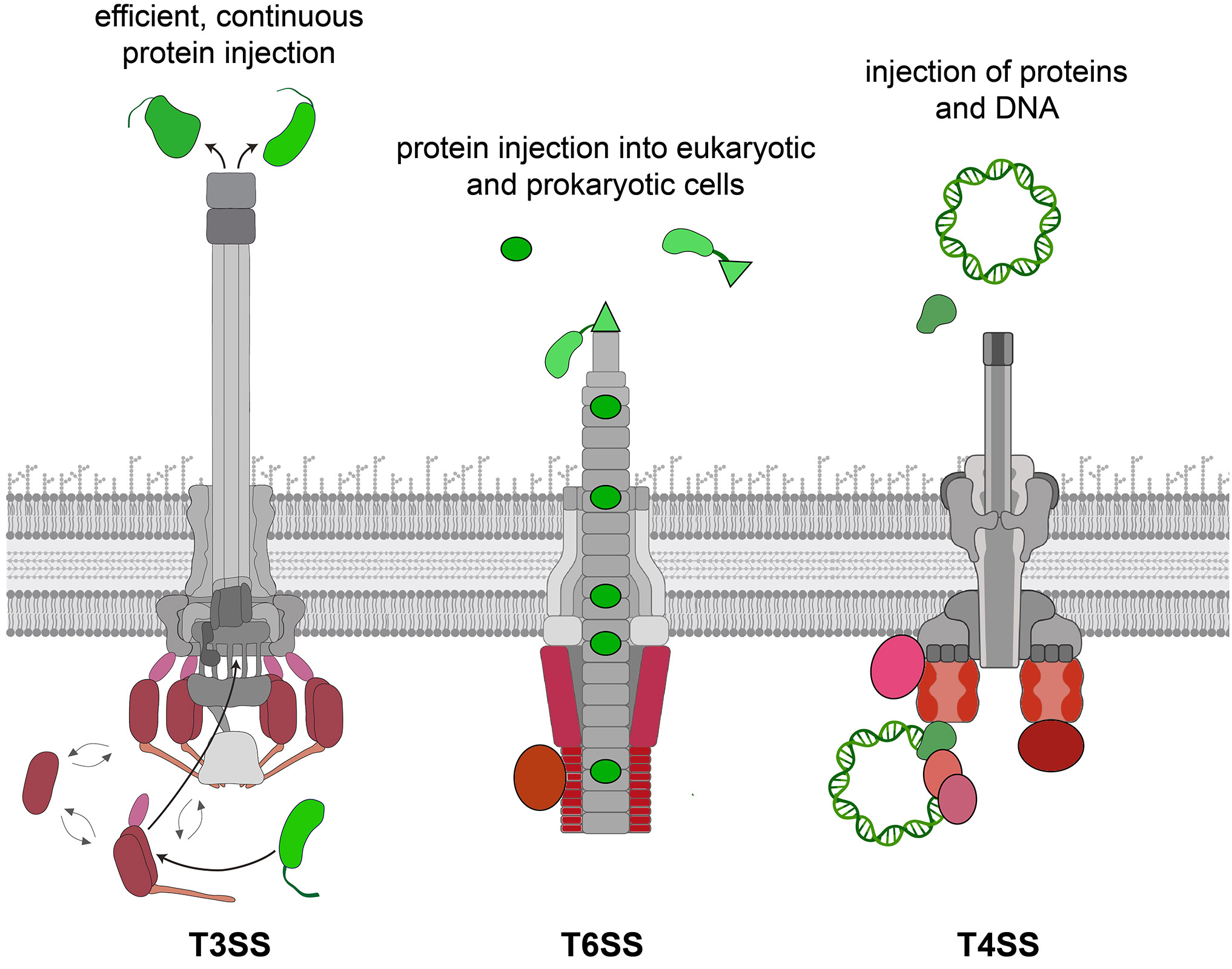Pioneering Research on Bacterial Secretion Systems and Virulence Mechanisms
Bacteria use secretion systems to manipulate eukaryotic cells and compete with each other
Bacterial secretion systems are intricate molecular machines that enable bacteria to communicate with and influence their surroundings. These systems are among the most complex and fascinating molecular machines in prokaryotes, playing a key role in bacterial symbiosis, competition, and virulence. Remarkably, nineteen of the world's twenty deadliest bacterial pathogens rely on these systems to infect their hosts. However, beyond their role in disease, these secretion systems—evolved to precisely manipulate animal and plant cells—hold vast potential for innovative applications.
Our research is centered on three specific bacterial secretion systems that have the unique ability to inject substances directly into other cells: The Type III, IV, and VI Secretion Systems (T3SS, T4SS, T6SS). The T3SS is highly efficient at injecting proteins into host cells, while the T4SS can additionally transfer DNA. The T6SS, resembling an inverted bacteriophage, can deliver proteins into both eukaryotic and prokaryotic cells.

Our work investigates the molecular mechanisms and dynamics of these secretion systems within biologically relevant models. We want to understand how external factors regulate these systems and explore their application potential in medicine, plant protection, and biotechnology. By integrating cutting-edge approaches such as synthetic biology and optogenetics, my goal is to translate these discoveries into practical solutions that address some of the most pressing challenges in health and sustainability.

In this endeavor, fundamental research and applied science will go hand in hand, driving innovation and advancing our understanding of these vital biological systems.
